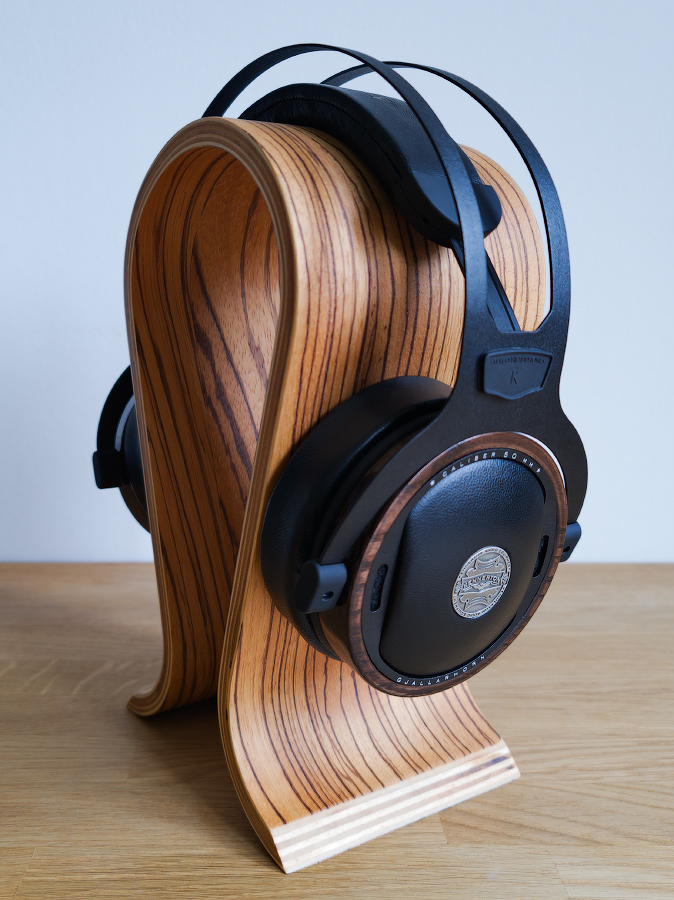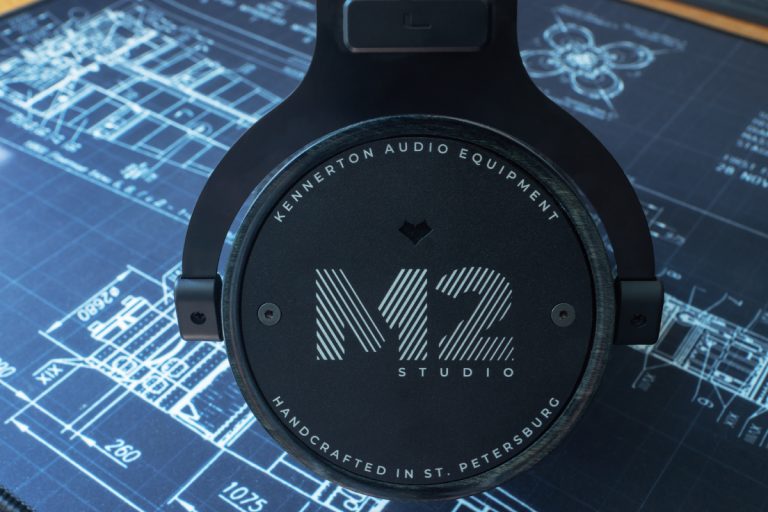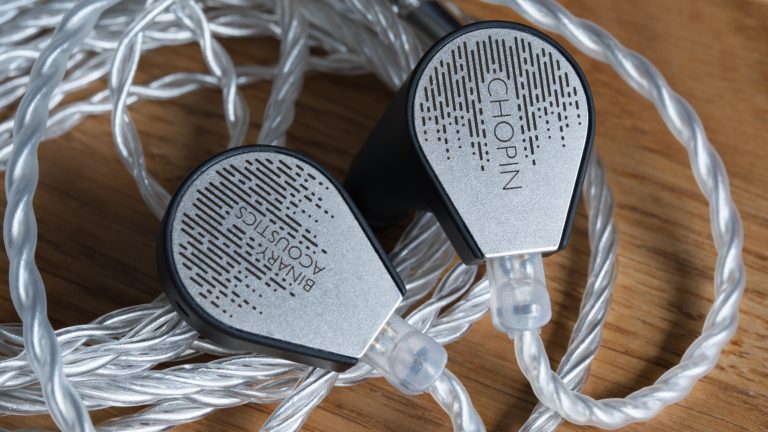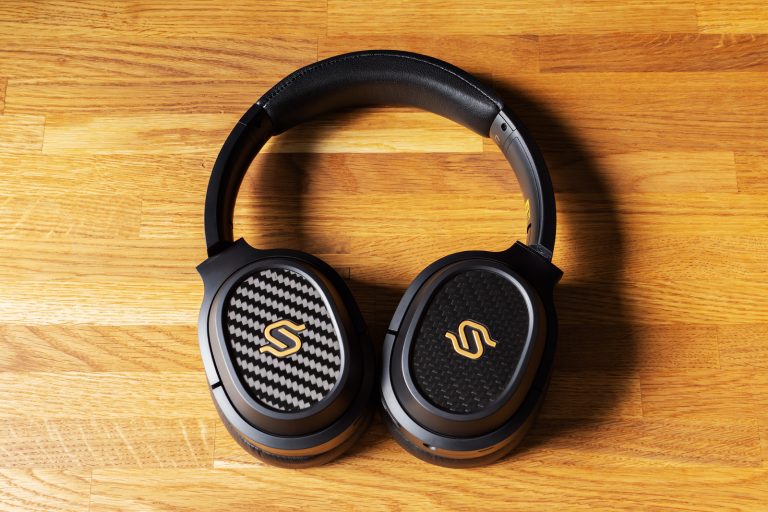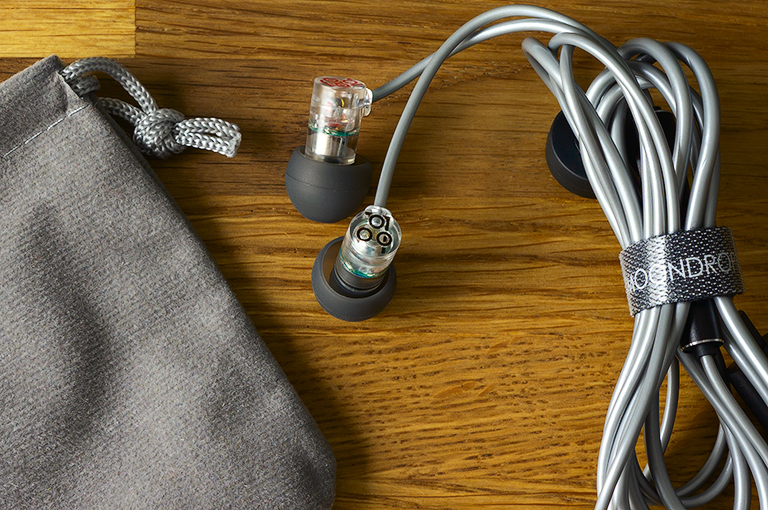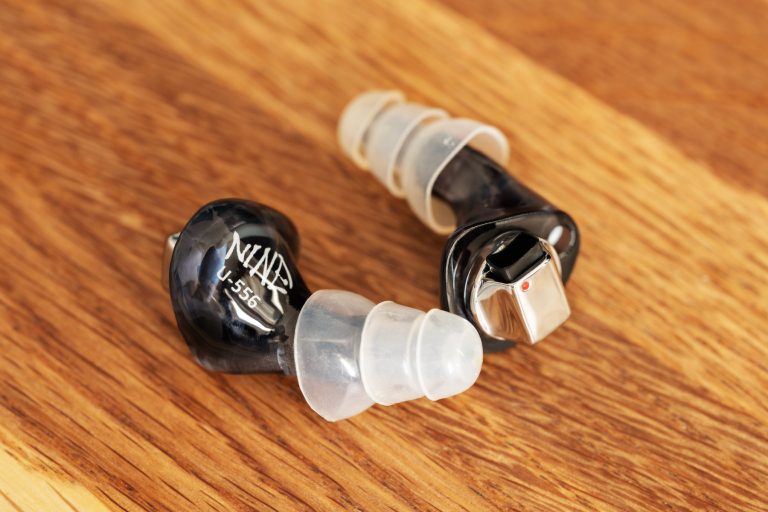MoonDrop Golden Ages 1979 TWS Earphones Review
Another chance. I decided to give MoonDrop’s TWS earphones another chance, and it was a tough decision because MoonDrop Alice were shamefully poor in terms of connection stability and proprietary software.
When it comes to MoonDrop Golden Ages 1979, which I’m gonna talk about today, my attention was drawn to their design, low cost, and a planar driver. And I also had a glimmer of hope that at least MoonDrop managed to bring the software to the users-don’t-get-sick-and-tired state, after all.

I got Golden Ages (hereinafter — GA) for $80 a month ago, and now they already go for $75.
What’s included
The earphones come in a brightly decorated large box.

What do you get:
- The earphones;
- A charging case;
- A protective cover for the charging case;
- A USB-A to USB Type-C cable;
- 4 pairs of eartips of the same type in different sizes.
There are some papers underneath, including a quality assurance service report.
Design, assembly, technology
TWS earphones start with a charging case, which is quite large and stylish when it comes to GA.
The design and color choice is no accident: in 1979, the first Sony Walkman TPS-L2 cassette player was released, which looked like this:

Therefore, there is an image of sort of a TPS-L2 window and a specific left-pointing arrow at the front of the case (the film was rewound from the right reel to the left one if you are not in the know) and an orange pairing button at the back of it.

There is a single green indicator diode at the front, too. The USB Type-C charging port has been moved to the bottom face.
The case interior is painted orange. The earphones fit in tightly, hold on to the case with magnets, and are not loose.

You can pull (with noticeable effort) a transparent protective cover on the case, equipped with an eye for attaching a lanyard.

The case is well-made; it feels pleasantly smooth, opens and closes without creaking, with a mid-elite click.
Let’s move on to the earphones and start with their technological features. The GA use a 13 mm planar driver. The manufacturer focuses on the dual suspension system implemented in this driver, as well as 4 times higher efficiency as compared to dynamic drivers of the same size.
The earphones are made of gray plastic, with some themed pictures coated on the ‘sticks’ on the outside. And what’s the main, they have L and R on them. There are microphones at the ends of the stems that capture the user’s speech, one for each earphone.

The compensation hole is neatly covered with a mesh and oriented upwards.

The oval-shaped sound duct is extremely short, covered with a mesh, too. There are additional holes on the inside; I suspect these are additional microphones for ANC.

There are charge contacts at the ends of the ‘sticks’.

The earphones are made quite neatly, but they feel cheap: the pictures are of poor quality, and joints and burrs are visible on the plastic. The enclosures are painted, which immediately raises the question of their durability. But, as always, it is necessary to keep in mind the product price. In terms of visibility and recognition, everything is just fine: once you see them in someone’s ears, you will never mistake them for other TWS.
Hardware and software
Before describing the functionality of the native Android application itself, I should tell about some ins and outs, that is to say, how you can update the application and firmware so that you can see everything that is shown below.
The algorithm is as follows:
- Follow the link https://www.pgyer.com/SrNXCM—there is the application MoonDrop Link 2.0, version 1.0.50c-240429. (On the manufacturer’s website, there is version 1.0.0-bla-bla-bla.)
- We need to install it, launch it, go to the GA settings on the OTA tab, and select firmware version 1.1.0.
- Time for an update. It’s working like a charm.
So, the application starts from the device selection screen. Let’s choose GA.

On the first EQ tab, you can select one out of 5 preset equalizers.

On the ANC tab, you can control the following values:
- Noise reduction mode—acoustic transparency, all off, or active noise reduction is on.
- Enable or exclude any of these three modes from the settings rotation.
- Set the mode switching sequence.

The Setting tab provides access to selecting the hardware gain mode, as well as enabling support for LDAC and LC3 codecs.

On the OTA tab, you can select one of the firmware options available online or choose a file from the local storage.

The last Touch tab hosts control gesture settings.

For each command, you can select a single click, a double click, a long press, etc.

Ergonomics, usage experience
Hardware
Good points:
- The earphones are stably connected to the source (when using LDAC, I tested them with Samsung S23 Ultra and Hiby R6III) and do not lose connection, and this is already half the battle.
- The earphones are easy to pull out of the case, they’re made for comfort of your fingers.
- Gestures are recognized and processed without any problems.
- Active noise reduction works, and it works quite well, at around the level of Soundcore Libery 3 Pro.
Ins and outs:
- The earphones ‘sit’ very tightly in the case, which heavily limits options for alternative eartips: 2-flange SpinFit, large Tangzu Tang Sancai, standard ‘foams’ and many more eartips just do not let you close the case. I’ll tell about the eartips in detail below.
- The microphones are disgusting, much worse than anything in the same ballpark.
- IPX rating is not stated. However, I had functional training wearing them, sweated a lot, and the earphones survived. But I’ve only tried it once.
Lastly, there is my personal problem, which is my beard. When the acoustic transparency was on, it turned out to be impossible for me to use GA because the ‘sticks’ of the earphones touched my beard hair all the time and rustled nastily.
As for the fit and enclosure geometry, I tend to regard them as normal (as to my own ears). It is impossible to forget that GA are in your ears, that is, to stop feeling them, as it works with Sony Linkbuds S. It is even difficult to wear them for 4-5 hours as the enclosures begin putting unpleasant pressure on your auricles. However, as for 3-4 hours of listening, they suit me personally quite well.
It would be wrong to make any generalizations out of this very personal case.
To sum up: the earphones have no problems with connection, and there is no reason to hope for the appearance of any good microphones in TWS (at the current stage of technological development) for any money in the world.
Software
The application has started working much better – it is more or less stable, it is logically organized, and it just works, after all. I’d like to specially mention very funny notification sounds voiced in a kawaii girlish manner, which was done by Mitsuki Yuki, the MoonDrop mascot (see the photo of the kit, the picture on the box). Compared to the nightmare that was in the days of MoonDrop Alice, the current version of Link 2.0 is the apex of grace and convenience.
However, this is only if you compare Link 2.0 versions with each other.
And if we take into account any competitors, then some limited capabilities come to light:
- no N-band equalizer, let alone a parametric one. There are predetermined presets only;
- no notification volume setting;
- no wizard to make your own equalizer;
- no implemented function to automatically enable acoustic transparency;
- no connection to two devices;
- no sleep timer setting in idle mode;
- no way to control the volume using gestures;
- no way to switch equalizer presets using gestures.
Besides, in order to upgrade to firmware 1.1.0, you need to google really badly and make it through to the method that I described above. There is also lousy English, but that already seems to be hopeless.
On the other hand, GA and those TWS that can do all of the above are apples and oranges in terms of their pricing.
Quick specifications overview
- Design: closed-back ‘earbuds’.
- Drivers: 1 planar driver.
- Weight of a single earpiece: 5 grams.
- Weight of the case with the earphones inside: 46 grams.
- Bluetooth version: 5.3.
- Dust and moisture protection: none.
- Audio transmission protocols: SBC, AAC, LDAC, LC3.
- Earphone battery life: approx. 5 hours when using LDAC and medium gain level.
- Earphone charging time: approx. 1 hour.
- Case charging time: approx. 1.5 hours.
Subjective sound impression
Since the earphones have 5 equalizer presets, we need to talk about them point-by-point. Surprisingly, 4 out of 5 presets are not bad. They are frankly listenable and are a little more ‘like or dislike’ and a little less ‘failed tuning or OK tuning’. Only the Secret preset sounds as if someone fell asleep on the keyboard when tuning: this is a totally, mysteriously distorted sound.
So, I stayed with the Basshead preset for the outside and the Reference one for home. By ear, these two presets differ only in the amount of subbass, which you would want more in a noisy urban environment, especially as GA has certain problems with sound insulation.
GA sound… great. They sound just phenomenally good and ‘right’ for TWS earphones in general and even more so for such inexpensive TWS earphones.
In terms of subbass and bass tuning, MoonDrop bucked the trend and did not ‘pile up’ 120 Hz on them so that they would beat and shake on your head, leaving all frequencies to the left behind. In GA, the subbass dominates the bass. They are well separated and do not ‘overlap’ each other. I can assume that the frequency response in this part is linear, but rotated clockwise. The choice of eartips is very important: if you do not hear subbass or it is subtle and not deep, try different eartips (see the next section).
The lower middle and middle sections are just great, I don’t know how else to describe them. They are full-fledged, smooth, informative, and everything is just fine with them.
The upper middle section reveals a little fly in the ointment: GA sound a bit unnaturally in this frequency range, a little shriller than necessary. And that’s because the volume at 4 kHz should be lower than one at 2.7 kHz. GA have them equal, or even 4 kHz may outvoice 2.7. This gives rise to sharpness, sort of ‘detail’, but also artificiality of the sound. I need to underline: this is about a fine nuance and not about a fatal tuning error.
And further up, to the right of the frequency response graph, everything is fine up to nearly 11-12 kHz, where the listener will find the nastiest surprise in GA tuning – a gargantuan mountain. The ‘mountain’ can be heard, and rustling and ‘crackling’ appear on some tracks that actively use this range. Some people do like it, but I don’t. The disaster is not immense, it is still a category of ‘I don’t give a shit pretty much’/’you can get used to it’, as you like. And it’s still infinitely better than, say, Fiio FW5, true story.
The feeling of the virtual sound stage is realistic, but it is more deep rather than wide. There is no incredible sound source positioning.
Thus, I am inclined to rate the GA tuning as outstanding, despite that annoying Qomolangma at 11 kHz. I don’t remember any manufacturer setting up TWS earphones so well, so deliberately.
Eartip choice
Eartips for GA are a pain in the ass because of two facts:
- the GA sound depends on the eartips A LOT
and, at the same time, - the choice of eartips for GA is strictly limited to ‘short’ models because the charging case will not close otherwise.
And I would like to change the eartips because the ones provided do not ensure really good sound insulation, which is why there is not enough subbass, and ANC works not really effectively.
The good news is that usual ’round’ eartips can be pulled on oval sound ducts of the earphones quite well.
My list of what you can put on GA, with the earphones fitting in the case:
- JBL Project Rock;
- Whizzer ET100AB;
- Tangzu Tang Sancai – Wide bore;
- SpinFit OMNI;
- Zhulinniao Zhu Rythme;
- Sony EP-NI1000 (eartips WF-1000xm4).
All kinds of SpinFit CP100, CP240, ‘foams’ by KZ and many other models will go with the earphones, but not with the case, so to speak.
How does the GA sound change in dependence to the eartips? Radically:

The fit depth also has an additive effect, although with such an earphone form factor it can be varied within very small limits:

Personally, I chose Tangzu Tang Sancai – Wide bore. They turned out to be the most comfortable for me and the closest to the eartips provided in terms of sounding. But they insulate much better.
Measurements
The headphones were used with the Hiby R6III player (LDAC). A measuring rig conforms to the IEC60318-4 standard. The smoothing is indicated on the graphs. I’ve described the limitations of the rig and the headphones measurements in general in this article.
This is the basic frequency response graph for GA with ANC turned on, medium gain, and the Reference preset:

And it’s an absolutely brilliant setup because:
- the subbass is between the Harman curve and the neutral curve;
- the middle corresponds to the Harman curve;
- the upper frequency range falls below the neutral curve;
- it all starts looking ill at 12 kHz.
The upshot is tuning, which sound is more fun compared to completely neutral one, but it’s still not as V-shaped as Harman. It is very smooth, with 5-6 kHz correctly ‘suppressed’, but with 4 kHz raised, which negatively affects the sound.
And there are immediate answers to basic questions: is sound delivery different with ANC on an off? No.

Do volumes of the left and right channels match well? Yes, very well, given the fact that it is very difficult to put earphones on a measuring rig in an absolutely uniform manner.

How much does the volume differ at low, medium and high gain levels? By 6 dB, that is, twice between the low-middle and middle-high settings. The frequency response does not change in any way when switching the gain.

Are nonlinear distortions large? No, they are surprisingly small.

Let’s go back to the equalizer presets, namely Monitor and Basshead:

As you can see, everything is the same for these two setups, and the differences are on the left side of the frequency response:
- the Monitor preset is indeed the smoothest one, additionally losing 2.5 dB at 200 Hz, but bringing the subbass to the level of +2.5 dB;
- the Basshead preset also drops to -2.5 dB at 200 Hz, but flies up by +8 dB at 20 Hz.
And again, note that both of these presets sound good, they are tuned logically and harmoniously, and both will find their fans.
Next come the oddities. The 5128 preset:

If I understand the idea correctly, then the setting should correspond to how the diffuse field looks on the Brüel & Kjær Type 5128 rig. The dark blue line is a curve that occurs after transferring measurements from 5128 to 711. And the light blue one is the frequency response of the earphones with the 5128 preset. So, it’s either me who doesn’t get a point or someone calls presets in a weird way. This setup sounds, if I’m honest, acceptable, but a little booming because there is no need to raise anything at 600 Hz this way ever.
Lastly, the most mysterious setup is Secret:

It’s very… audacious, extravagant, and trailblazing. I’m not going to describe the sound though.
Summary
Above all, Golden Ages are a strong statement by MoonDrop, ‘We can’. We can make TWS earphones that work decently, with a decent application, with decent ergonomics, with excellent tuning for its class (and more than one), and a planar driver with really low distortion.
The charging case is a bit too large, dust and water protection is not rated, there are no smart features, gesture settings are limited… compared to earphones that cost 2-3 times more expensive.
The only big issue is the eartips, the problem with which, if I were MoonDrop, I would solve as soon as possible in a simple way – by releasing alternative sets – as that jugglery, which is described above, is just tedious and unpredictable in terms of sound.
So to buy or not to buy? To buy.

